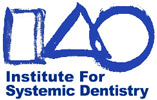Traditional orthodontics focuses on straight teeth. It is based on the idea that genetics cause malocclusions—misalignments between the teeth.
Functional orthodontics—the approach we take at the Institute for Systemic Dentistry—straightens the teeth, too. It also aligns the upper and lower jaws. Functional orthodontics practitioners believe that dental abnormalities are caused by developmental and environmental problems, not genetics.
To treat abnormalities, functional orthodontics (also known as functional jaw orthopedics) creates room for the teeth by expanding the upper and lower jaws, rather than by the extraction and surgery used in traditional orthodontics. This expansion not only creates a better airway but also helps to prevent temporomandibular joint (TMJ) pain, sleep apnea, neck pain, shoulder pain, migraines and certain hearing issues. Because functional orthodontics takes the whole head and facial structure into account, it also creates beautiful facial profiles.
Another way to look at it: Traditional orthodontics focuses on correcting symptoms but not the perceived cause—genetics. Functional orthodontics looks to correct developmental problems before they cause abnormalities in the mouth.
Appointments with functional orthodontists are a little different from a traditional orthodontist’s appointment. The functional orthodontist uses myofunctional therapy to correct and guide the facial muscles into a normal pattern. This therapy relies on exercises to strengthen the muscles of the mouth, tongue and face. We use functional appliances to better align the jaws to correct abnormal profiles. It is possible to expand the jaws using functional orthodontics.
Functional orthodontists treat patients with the airway in mind, in contrast to traditional orthodontics, which may create airway issues. This is especially true in the case of retraction orthodontics, in which the orthodontist has the premolars removed and retracts the front six teeth. This may cause the lower jaw to be pushed into a more posterior/superior position and decreases the airway space. Ultimately, functional orthodontists recognize that teeth, TMJs and airways are connected and that treating each has an effect on the others.
Functional orthodontists can work with children at a much earlier age than traditional orthodontists—sometimes as young as four years old—because we understand growth patterns and know how to guide facial growth. We learn how to recognize abnormal facial development early so we can address it while a child is still growing. Beginning effective treatment early can prevent more severe problems later. Traditional orthodontists focus only on the teeth, so they often have to wait until permanent teeth arrive to start working with patients.
Curious about whether functional orthodontics may be the right approach for your family? Give us a call. We’ll be happy to set up a consultation to discuss your unique situation.








